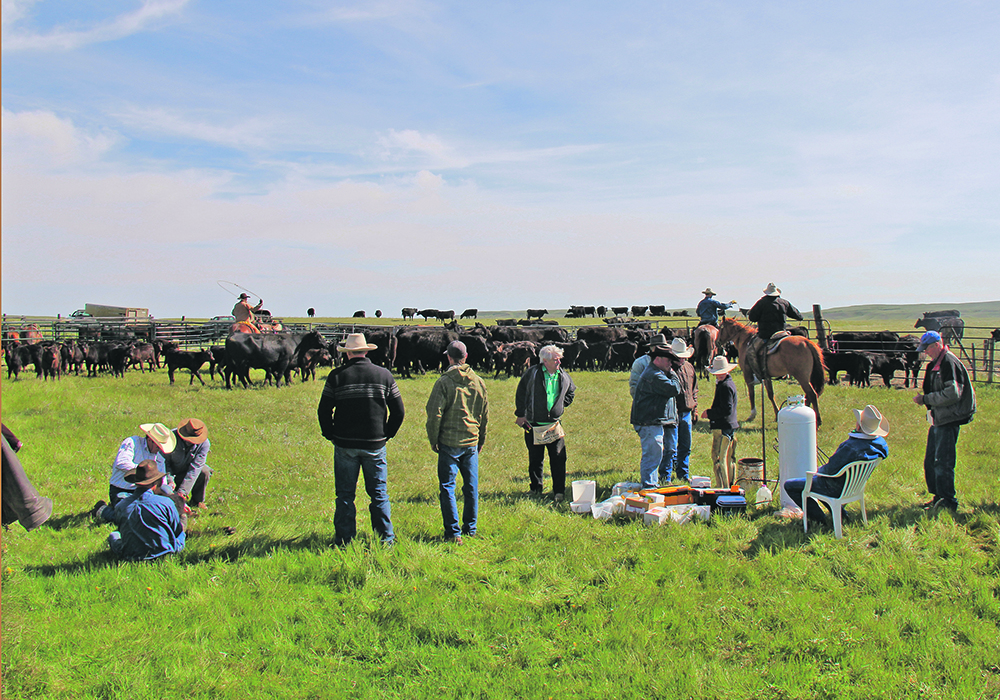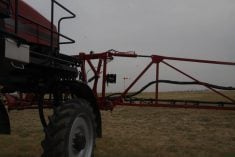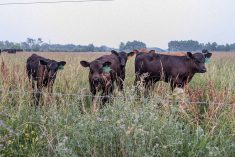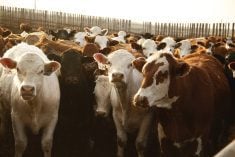Close attention to labels not only ensures the proper dose is administered but also that the vaccines are mixed correctly
The labels on cattle vaccines have important information and producers should make a point of reading them.
Lauren Carde, programs director for the Canadian Animal Health Institute, notes they contain information on route of administration, correct dose, timing, animal age and whether boosters are needed.
Attention to these specifics “ensure the safety of the human, the individual who’s administering it, as well as safety of the animal who’s receiving it and to ensure that vaccine is doing what it claims to do,” says Carde.
Read Also
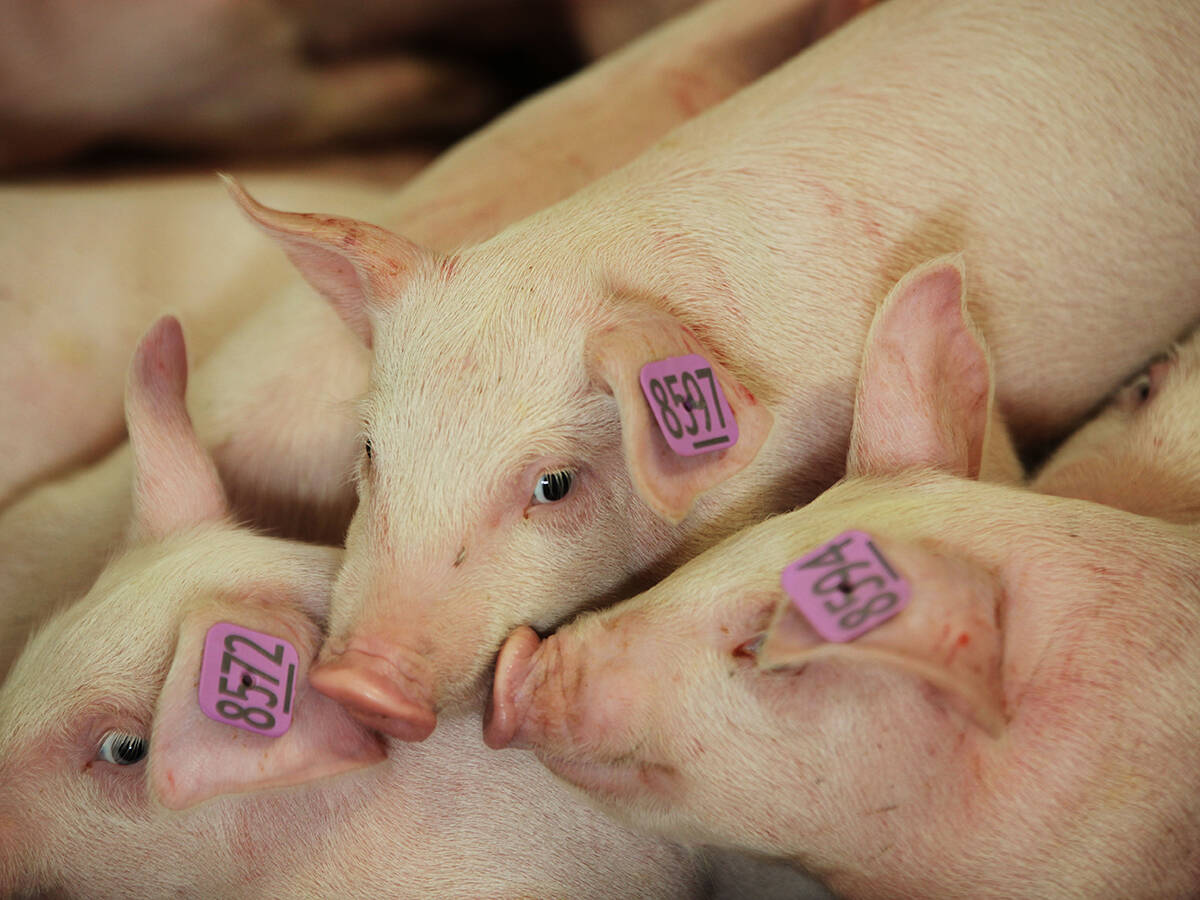
The Western Producer Livestock Report – October 16, 2025
Western Producer Livestock Report for October 16, 2025. See U.S. & Canadian hog prices, Canadian bison & lamb market data and sales insights.
Federal government regulations require multiple things on a vaccine label: assigned name, manufacturer and location of the manufacturer, serial number, establishment licence number, directions of use, expiry date, all components including antigens and preservatives, the quantity in metric units or doses, storage temperature, withdrawal period, the words “for veterinary use only” and any cautionary information necessary. This data is available in both English and French.
The assigned name is the scientific name of the micro-organism contained within the vaccine. Carde said it is the most prominent part of the vaccine label and must be approved by the Canadian Centre for Veterinary Biologics.
The serial number is the lot or batch number, which would allow the vaccine to be traced if there were an issue with a specific batch.
As for the directions for use section, Carde said it should be detailed and clear. It usually includes the dose and whether extra doses or boosters are needed, how the vaccine should be administered (intramuscular, oral, subcutaneous), the recommended age of animal to be vaccinated, whether the vaccine should be administered in a certain location and any precautions for the person who administers the vaccine, such as personal protective equipment.
Carde said labels may vary between brands but they must all present the same information, as regulated by the Canadian Food Inspection Agency’s Canadian Centre for Vet Biologics and bound by the Health of Animals Act and regulations.
Dr. Catherine Filejski, chief executive officer of the Canadian Animal Health Institute and an experienced veterinarian, said one of the biggest issues with vaccine labels is that producers don’t read them as thoroughly as they should.
Dr. Robert Tremblay, first vice-president of the Canadian Association of Bovine Veterinarians, echoed Filejski’s view. He said he often sees issues with doses when producers don’t read the label closely.
“The amount you give and the route that you give it are two of the really important things,” Tremblay said. “And I would get calls, ‘I read the label after we processed all the cows and realized, we should have given twice as much, or we realized we could have given half as much.’ That’s kind of a bit of a bummer.”
He said producers should also understand how the vaccine should be mixed. Shaking a vaccine that has components of a virus can cause damage to the virus.
“The recommendation now, even if you use something like a transfer needle, is rather than shake it, roll the bottle between your hands to mix it.
“It can be annoying sometimes because sometimes they seem slow to dissolve. But then it becomes even more important that you don’t lose your mind when you’re trying to mix it because you run the risk of damaging the vaccine.”

The need for vaccination depends on location and the antigens present in that area, as well as whether the herd is closed or open, herd history of disease, and whether the cattle are shown at events.
In Western Canada core vaccines that producers should consider include:
• bovine herpes virus type 1 (BHV1, also known as infectious bovine rhino tracheitis or IBR)
• bovine viral diarrhea virus (BVDV)
• bovine respiratory syncytial virus (BRSV)
• clostridial pathogens, specifically Clostridial chauvoei (blackleg), C. septicum (malignant edema), C. novyi (black disease), C. sordelli (gas gangrene), and C. perfringens types B, C and D (enterotoxemia and enteritis)
Filejski said producers should work with their veterinarians to create an appropriate vaccination schedule. When cattle are exposed to too many varieties of viruses and bacteria at the same time, it can overload their immune systems.
Tremblay said endotoxins are generally not included on a vaccine label, but producers should know that killed bacteria vaccines typically contain endotoxins.
“There is some concern that you wouldn’t want to give many vaccines that contain endotoxins at the same time,” he said.
“It would be important to be careful about that if the cows were pregnant because you wouldn’t want to run the risk of potentially causing harm.”
However, Filejski said producers can be confident in vaccine safety.
“In order to be licensed in Canada, a vaccine must meet rigorous requirements for purity, including purity from microbial byproducts such as endotoxins, as well as potency, safety and efficacy.
“All licensed veterinary vaccines in Canada are safe for the animals receiving the vaccine, safe for individuals handling and administering the vaccine, safe for the environment,” she said.
A veterinarian can provide the needed guidance.
“I think knowing what the local risks are is a big piece of knowledge that the clinic will have that you may not be familiar with, and then knowing the products that contain the antigens that are most important for the local area,” Tremblay said.




